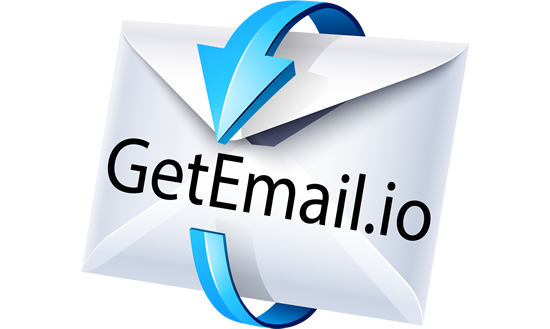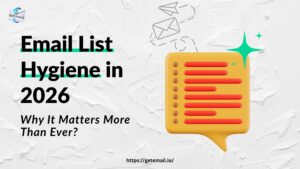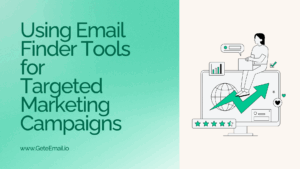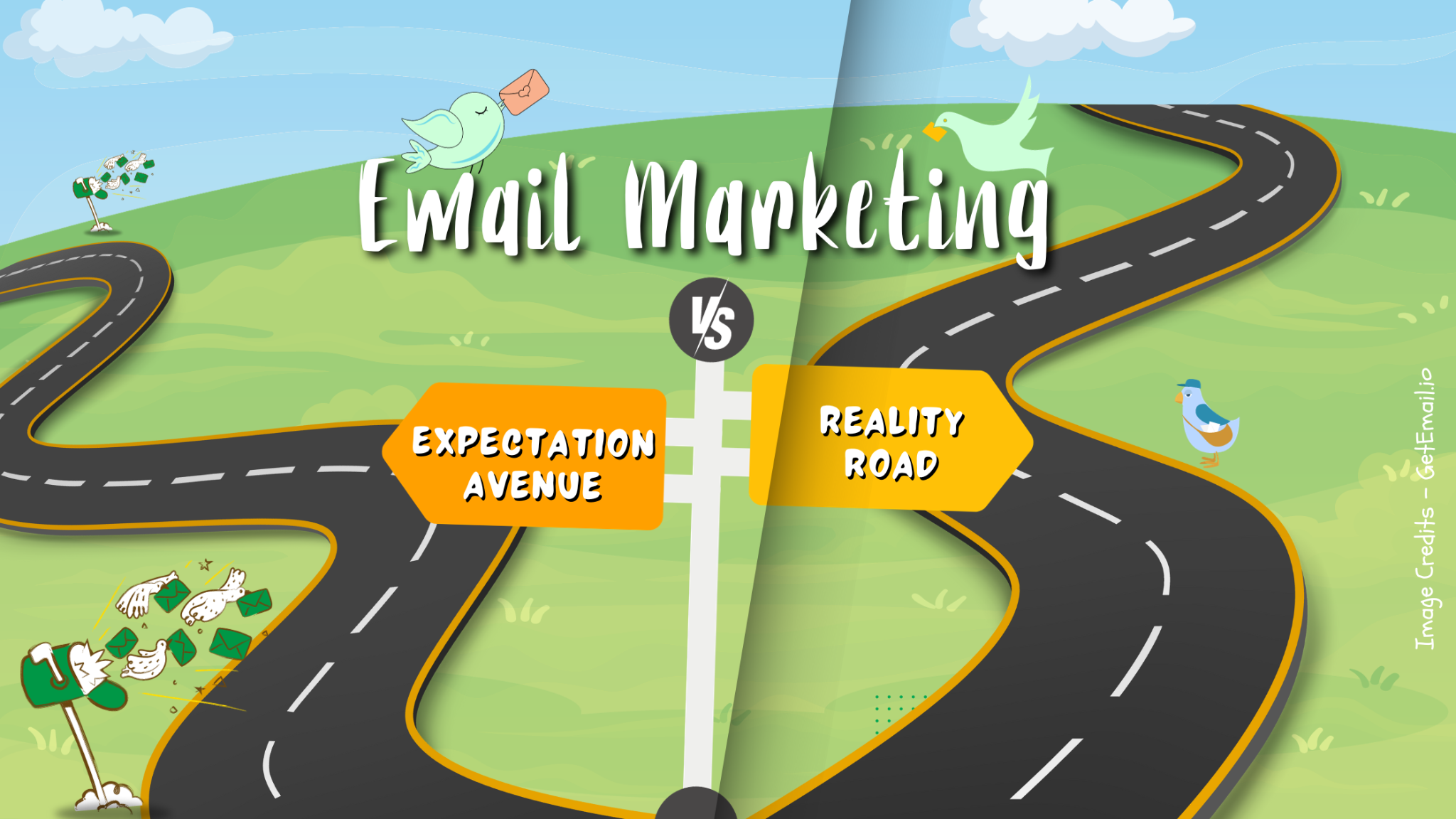
Email marketing is a powerful tool that has been a cornerstone of digital marketing for years. Ever thought about your email marketing expectations?
Email marketing allows businesses to reach their audience directly – delivering tailored content, promotions, and updates straight to their subscribers’ inboxes.
It’s like having a direct line to your customers’ hearts!
At first glance, email marketing does seem like a quick and easy way to reach success. You send emails, people open them, and your business thrives—right?
It might sound simple, but there’s more to this story than meets the eye.
As anyone who’s tried it knows, the journey is full of twists and turns!!!
It’s like embarking on an adventure, and just when you think you’ve got it all figured out, you encounter challenges that you didn’t see coming.
That’s the beauty of email marketing—it keeps you on your toes!
As you read ahead, we’ll talk about what new marketers expect in email marketing versus what really happens.
But wait, there’s more!
We will be sharing tips and tools to get better results with email marketing.
Also, to make your reading engaging and interesting, we have colourful illustrations that may metaphorically be related to the context of this article.
Sometimes, you’ll have to ignore the literal meaning and let your imagination roam free.
These illustrations will help you better understand the twists and turns of the email marketing world.
So, are you ready? Let us get started.
Expectation #1 - Overnight Success
In today’s fast-paced digital landscape, we’ve become accustomed to instant gratification, haven’t we?
We want immediate results, and when it comes to email marketing, it is no exception.

Many marketers believe that once they hit the send button, they’ll see an avalanche of clicks, conversions, and sales.
Did you also feel the same? Trust me, you are not alone.
We’ve all had those moments when we believe every email we send will be opened, read, and result in a parade of conversions.
But here’s the kicker: the reality of email marketing is more nuanced and sometimes unpredictable. It’s like opening a surprise gift; you never quite know what’s inside until you dive in.
The Reality of Long-Term Strategy
The truth is that email marketing, like most marketing strategies, is a long-term game.
It’s not a magical potion that delivers instant success. If you expect to send one email and witness an explosion of engagement, you’re in for a disappointment.
Yes, you read that right!
In reality, email marketing success often comes gradually, like a tree that grows over time.
According to real-time statistics, the average email open rate across industries is approximately 26.80%.
This signifies that not every email will lead to instant success.
Email marketing is a marathon, not a sprint. It’s about building trust, nurturing relationships, and constantly refining your strategy.
It’s like tending to a beautiful garden; you need to nurture it patiently to see it flourish.
Talking about the email open rate, did you know that you can track your email deliverability and open status using the GetEmail.io Gmail extension? It’s a great feature loved by all our users, as it lets them be informed about whether their email successfully landed in the inboxes, and if recipients have opened it or not.
Now that we have seen the huge difference between the avg. email open rate and the expectation of a marketer, you may wonder, is there a way to bridge the gap between the expectations and the reality?
Well, absolutely! The key to managing expectations in email marketing is setting realistic goals.
It’s like mapping out your journey and making achievable pit stops along the way.
What can you do?
According to recent data, the ROI of email marketing is an impressive 42:1(Ref – Constant Contact).
That is, for every one dollar you spend on email marketing, you will make forty-two dollars.
Therefore instead of anticipating immediate conversions, you must learn to focus on smaller, achievable milestones.
Here are a few ways to do it;
Instead of aiming for a 100% open rate, you could set a goal to improve your current open rate by a certain percentage. For instance, if your open rate is currently twenty percent, aim for a twenty-five percent open rate. And if your current CTR is 5%, aim for a 10% CTR.
This incremental improvement is both realistic and measurable.
Besides this, you might want to concentrate on creating high quality content that resonates with your audience.
And then, track your open rates, click-through rates, and other key performance indicators (KPIs) over time; this data will reveal your campaign trends and areas for improvement.
Remember, the most successful email marketers are those who play the long game, consistently delivering value and building trust with their subscribers.
Expectation #2 - 100% Email Open Rates
Crafting the perfect subject line is an art in itself. It’s the gateway to your email content and can significantly impact open rates.
Many marketers put tremendous pressure on themselves to create subject lines that guarantee high open rates.
They believe that with the right subject line, every email will be eagerly opened and devoured.
While an enticing subject line is crucial, the expectation that every email will have a sky-high open rate is unrealistic.
The Harsh Truth About Open Rates

In reality, not all emails will be opened, and open rates can vary widely. It’s like a rollercoaster ride; sometimes you’re up, and sometimes you’re down.
Real-time statistics tell us that the average email open rate is around 21.33%.
A 100% open rate is a rare feat! It might surprise you, but that’s the truth.
However, don’t let this reality discourage you. Instead, you should embrace it as an opportunity to refine your email marketing strategy.
If you look at it, the factors influencing open rates are numerous, say your list quality, the relevance of your content, the timing of your email sends, and the effectiveness of your subject lines.
You can invest time in crafting subject lines that capture attention and accurately represent your email’s content.
One of the ideal ways to ensure a healthy email list is to incorporate GetEmail.io, an AI-based email lookup tool, into your email list-building strategy.
Remember, it’s not about coming up with a strategy to trick recipients into opening your emails; it’s about delivering value and engaging your audience.
By managing your expectations around open rates and focusing on continuous improvement, you can achieve more consistent success in your email marketing efforts.
Now, take a moment to check out the infographic below – it highlights the key elements that impact your email open rates.
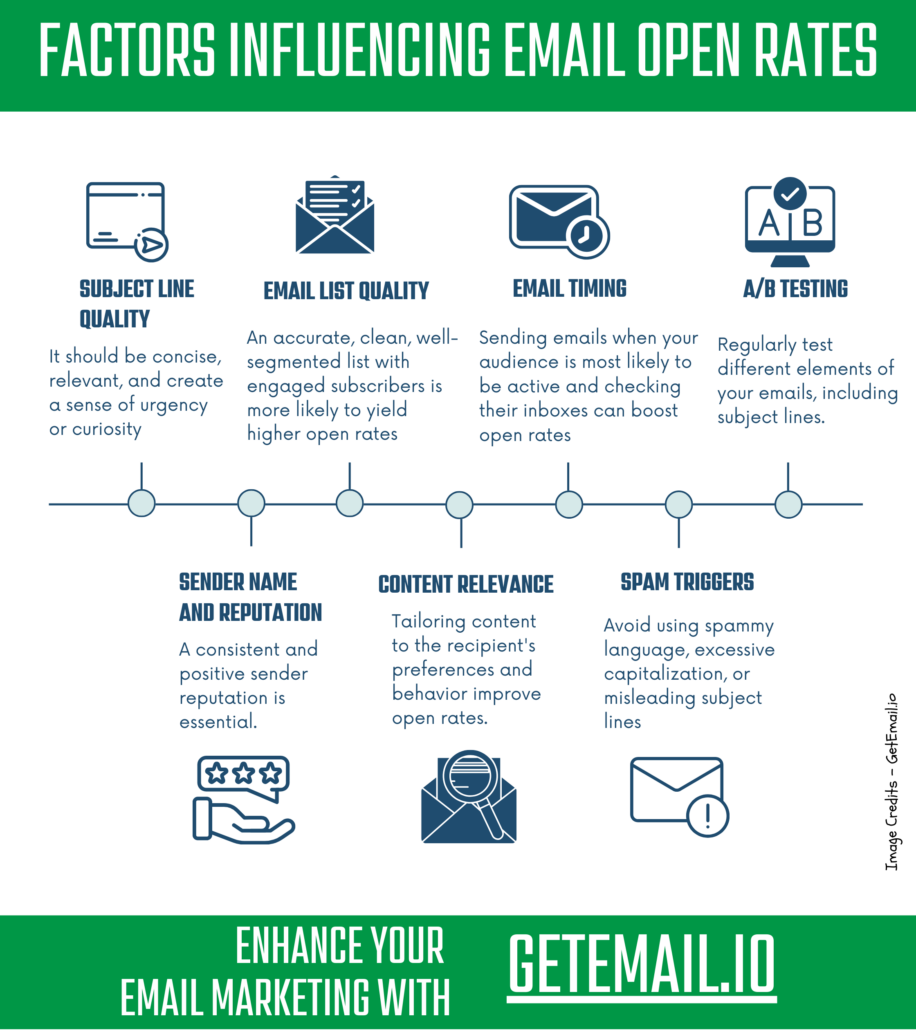
Expectation #3 - No Unsubscribes
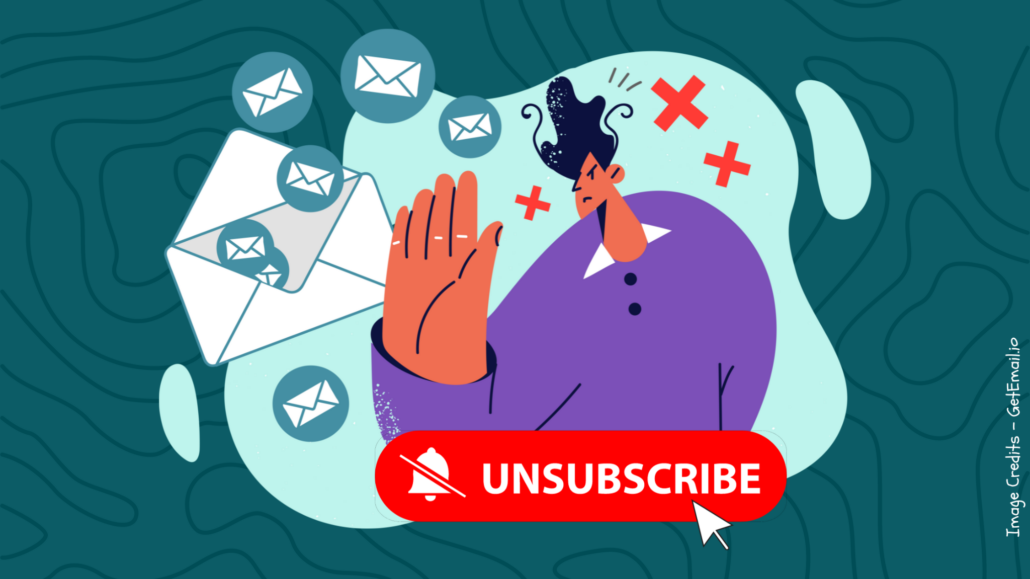
Unsubscribes are a topic that can strike fear into the hearts of email marketers.
The fear often stems from the belief that every unsubscribe represents a lost opportunity, a rejection, or a failure of your email campaign.
However, it’s essential to recognize that unsubscribes are not necessarily a negative sign.
The Unsubscribe Reality
It’s perfectly natural to want to keep every subscriber on your list, but the reality is that not every subscriber will be a perfect fit for your content or products.
When someone decides to unsubscribe, it can be disheartening, but it’s also a part of email marketing that you must embrace.
Unsubscribes are not necessarily a negative sign. In fact, they can be a healthy aspect of maintaining an engaged and relevant email list.
Subscribers who are no longer interested in your content or products can become disengaged or even mark your emails as spam if they continue to receive messages, they don’t find valuable.
This can negatively affect your email deliverability and sender reputation.
It’s essential to accept that unsubscribes are inevitable, but there are strategies to reduce them and maintain a healthy list.
Strategies to Reduce Unsubscribes
- Deliver Relevant Content
- Frequency and Consistency
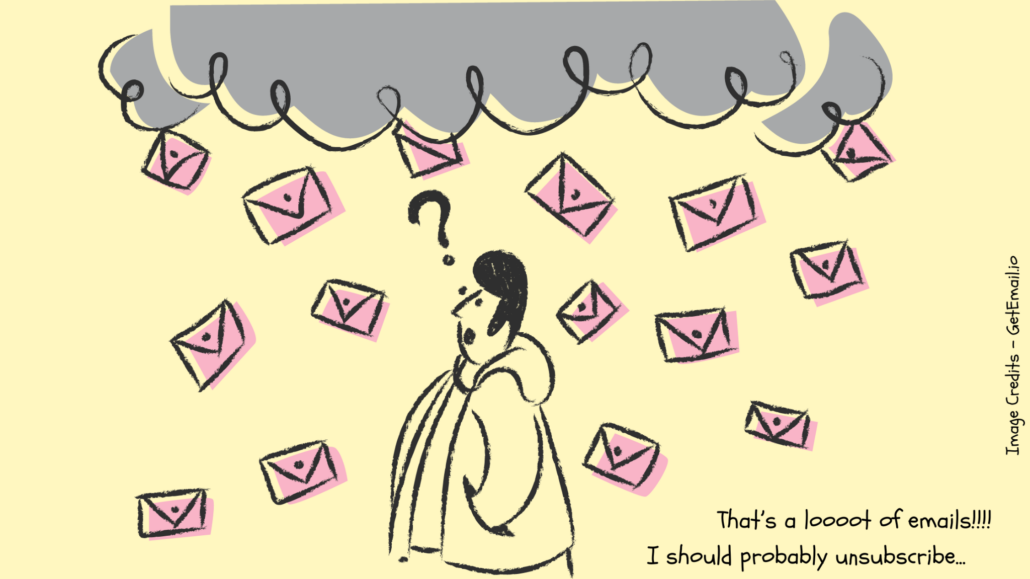
Stick to a consistent email schedule and allow subscribers to adjust their preferences.
- Preference Centers
Implement a preference center where subscribers can choose the type of content they want to receive and how often.
This empowers subscribers to personalize their email experience and reduces the likelihood of them unsubscribing.
- Engagement Tracking
Monitor the engagement levels of your subscribers.
Identify those who haven’t engaged with your emails for an extended period and consider re-engagement campaigns to bring them back into the fold.
- Relevant Subject Lines
Craft compelling subject lines that accurately represent the content of your emails.
Misleading subject lines can lead to unsubscribes and damage your sender reputation.
- Optimize Content for Mobile
With the increasing use of mobile devices, ensure your emails are mobile-responsive.
Difficult-to-read or non-responsive emails can frustrate subscribers, leading them to unsubscribe.
- Email Personalization
Use subscriber data to personalize your emails.
Address subscribers by their names and recommend products or content based on their past interactions.
Personalization can significantly improve engagement.
- Feedback Loops
Consider implementing feedback loops where subscribers can provide reasons for unsubscribing.
This data can help you refine your email strategy and reduce unsubscribes in the long run.
- Relevant Calls to Action (CTAs)
Ensure that your emails contain clear and relevant CTAs.
Subscribers should understand the value of clicking on your links, which can lead to higher engagement and lower unsubscribe rates.
- Quality Over Quantity
Focus on delivering high-quality content rather than bombarding subscribers with a high volume of emails.
Valuable and informative content is more likely to retain subscribers.
Effective List Management
Managing your email list effectively is a crucial part of email marketing. One way is to regularly clean your list to remove inactive or disengaged subscribers.
And the other way is to use a reliable source like GetEmail.io to find email addresses or verify the ones already there on the list.
It has been noted that the bounce rate gets drastically reduced with GetEmail.io because of the high accuracy rate.
This will not only improve your engagement rates but also reduce the risk of being flagged as spam.
Now, let us look at some strategies for maintaining a healthy email list.
- Make it Easy for Subscribers to Unsubscribe
First and foremost, it’s essential to provide an easy and straightforward process for subscribers who wish to unsubscribe.
Not only is this a legal requirement in many jurisdictions, but it’s also a best practice for building trust with your audience.
By making it easy for subscribers to opt out, you ensure that your email list only includes those genuinely interested in your content, which is vital for maintaining a healthy list.
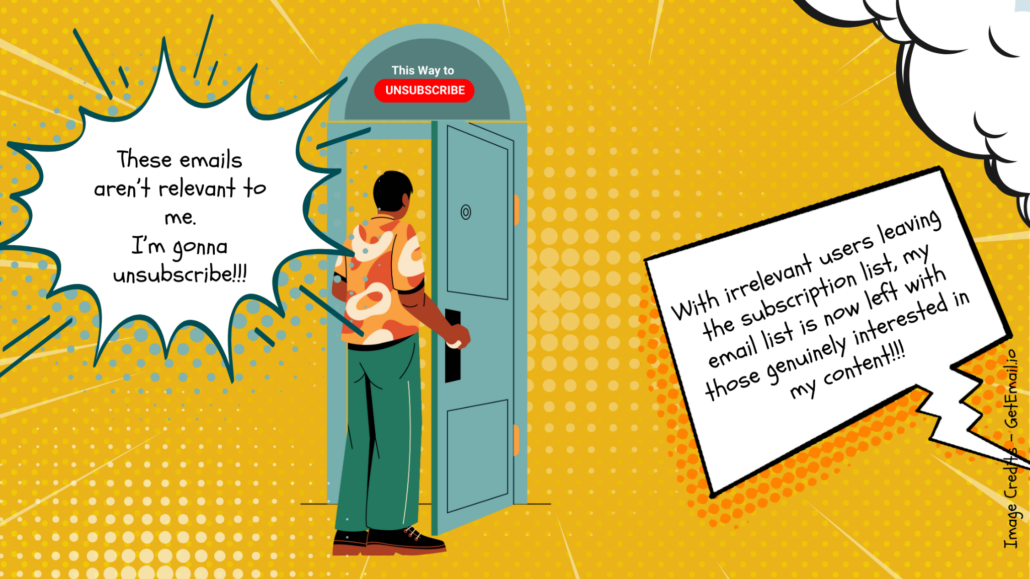
- Regular List Cleaning
Periodically review and clean your email list to remove inactive or disengaged subscribers.
These are individuals who haven’t interacted with your emails for an extended period.
What’s the use of having such people in your list?
Nothing!
Keeping them on your list not only affects your engagement rates but also risks harming your sender’s reputation.
By removing inactive subscribers, you can ensure that your email campaigns are reaching a more receptive audience.
- Engagement and Re-engagement Campaigns
Implement engagement campaigns to rekindle the interest of subscribers who have gone dormant.
Send targeted re-engagement emails with compelling content or offers to encourage their interaction.
If they remain unresponsive, consider removing them from your list.
These campaigns not only help you retain potentially valuable subscribers but also signal to email service providers that you are actively managing your list for better deliverability.
Remember, the goal is not only to reduce unsubscribes but also to keep your email list engaged and responsive.
By implementing these strategies, you can maintain a healthy email list while delivering content that resonates with your subscribers.
While the fear of unsubscribes is a common anxiety in email marketing, instead of seeing unsubscribes as a loss, as mentioned before, view them as a way to refine your email list and focus on those who are genuinely interested in your content.
They are a natural part of maintaining a healthy and engaged email list.
Unsubscribes, in a way, help you fine-tune your target audience and build stronger, more engaged relationships with your subscribers.
Expectation # 4 - Everyone Reads Every Email
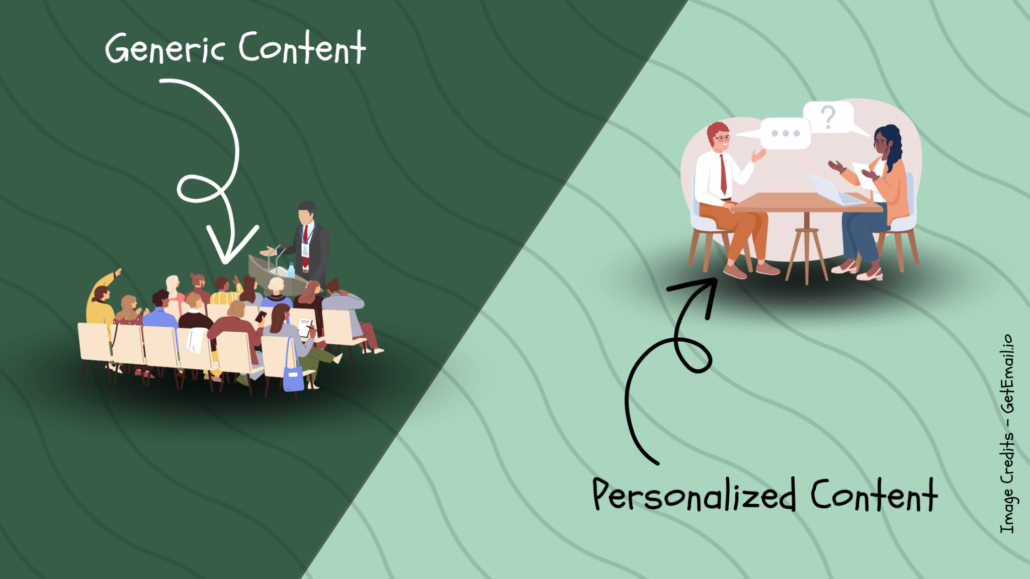
Many email marketers think that sending the same email to everyone is the way to go, especially with big lists.
But the truth is, each subscriber is different. They have unique interests and needs.
Just like how we all have different tastes in music or food, your subscribers have distinct expectations when it comes to the emails they receive.
Personalization lets you send emails that fit each subscriber.
So, what’s personalization all about?
It’s like having a wardrobe filled with clothes that perfectly fit each individual.
It means dividing your email list based on factors like what they’ve purchased before or how they’ve interacted with your emails.
This allows you to send emails that are not just one-size-fits-all but tailor-made for each subscriber. It’s like sending a gift that you know they’ll love.
For example, if you run an online store, you can send personalized product suggestions based on what someone has bought.
This not only meets the expectations of today’s customers but also increases the chances of people eagerly opening your emails, clicking on links, and making purchases. It’s like giving them a personalized shopping experience right in their inbox.
Knowing how email marketing works means understanding that not everyone will love every email you send.
It’s like knowing that even the most popular songs don’t please everyone’s ears.
The goal isn’t to make everyone like your emails. Instead, it’s about making sure that the folks who receive your emails find them incredibly useful and relevant to their needs.
Effective audience segmentation and personalization are how you make your emails matter more to people.
It’s like the difference between delivering a generic speech to a crowd and having a one-on-one conversation with a friend.
It also helps you lose fewer subscribers and get better results from your email campaigns.
Expectation # 5 - Email Marketing is Free Forever
Many new marketers often believe that email marketing won’t cost them much, or that it can be entirely free.
While it’s true that there are free email marketing tools available, the reality is a bit more complex.
When you first venture into email marketing, you can indeed make use of free plans offered by email marketing platforms.
These can be a fantastic starting point, especially if you’re a small business or have a limited budget.
They provide the essential tools to send emails to your subscribers, helping you get started.
However, as your email list grows and your marketing requirements become more sophisticated, you’ll likely come across additional costs.
These “hidden” expenses can include fees for using the email marketing platform, services to manage your subscriber list effectively, costs associated with creating captivating designs and content for your emails, and perhaps even investments in advertising or sponsored emails to reach a broader audience.
It’s like upgrading from a small sedan to a more spacious SUV as your family grows.
For example, let’s take the case of GetEmail.io.
We offer a freemium plan that’s sufficient for users to test the tool’s efficiency and find up to ten email addresses for free every month.
But when your needs expand, you can sign up for the paid plans that best suit your requirements.
You can refer to the below image for GetEmail.io’s pricing details.
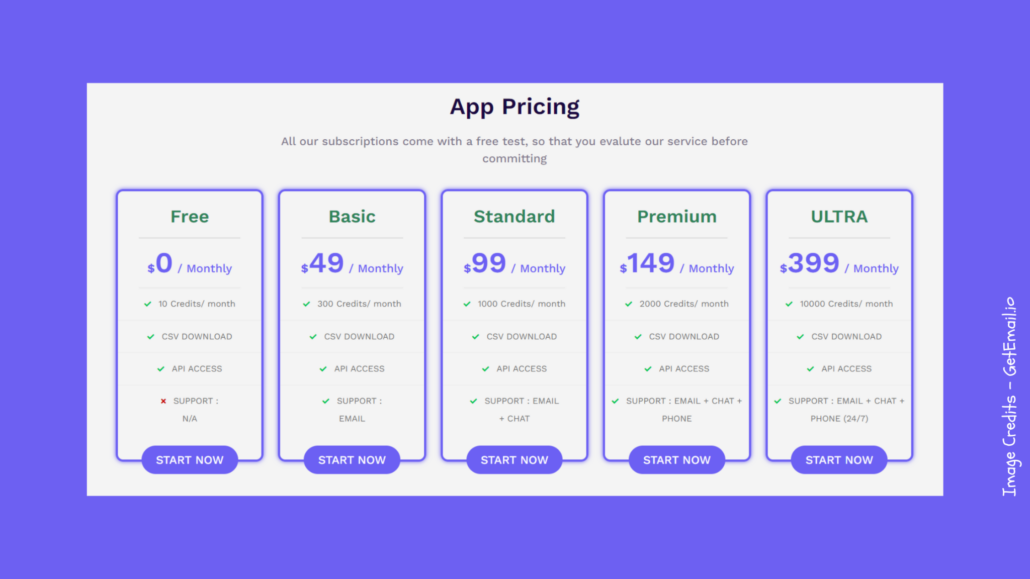
To manage these email marketing costs effectively, it’s crucial to budget for success.
It’s like planning a road trip and accounting for fuel, accommodations, and meals along the way.
This means thinking about all these expenses and factoring them into your marketing plan.
While email marketing is often more cost-effective than many other marketing channels, it’s not entirely free.
Recognizing the actual cost of email marketing enables you to allocate your resources wisely and measure your return on investment (ROI) more accurately.
It’s about being smart with your marketing budget and realizing that while email marketing can be highly efficient, it’s an investment rather than something that’s entirely cost-free.
So, what did we learn here? Email marketing is an invaluable tool, but like any tool, it comes with costs that should be managed effectively for the best results.
Expectation # 6 - No Spam Complaints
In the world of email marketing, the mere mention of the “spam folder” can send shivers down the spines of even the most experienced marketers.
It’s like a haunted house that no one wants to enter.
The expectation is that every email sent will effortlessly land in the recipient’s primary inbox, with no fear of the dreaded spam folder. However, the reality is far more nuanced.
Escaping the Clutches of the Spam Folder
Emails ending up in the spam folder is a common issue, but understanding the mechanics of spam filtering can help you avoid this pitfall.
Email service providers use complex algorithms to determine whether an email is legitimate or spam.
They consider things like how trustworthy the sender is, the quality of the email’s content, and whether people are engaging with it.

Ensuring Inbox Delivery
The secret to keeping your emails out of the spam folder is to have a good reputation as a sender.
You earn this reputation over time by sending emails that your subscribers find interesting and useful.
It’s like being the go-to storyteller who never disappoints their audience
It’s also important to avoid doing things that seem spammy, like using too many capital letters, having misleading subject lines, or using messy code in your emails.
Moreover, special email verification methods, like SPF, DKIM, and DMARC, can prove that you’re a real sender and improve your chances of your emails landing in the inbox.
By understanding how the spam folder works and taking steps to avoid it, you can make sure your emails are more likely to be seen by the people you want to reach.
So, don’t let the spam folder scare you; instead, let it inspire you to become a master of email marketing, ensuring that your messages reach the right audience.
It’s all about understanding the rules and using them to your advantage in this ever-evolving email marketing landscape.
Expectation # 7 - It’s Easy Peasy to Create Engaging Emails
At first glance, crafting a captivating email might seem like a breeze.
Some marketers believe that putting together an email is as effortless as a few clicks on their email marketing platform.
However, the truth is that designing an email that truly engages your audience is a more intricate and creative process than it appears.
It’s like creating a piece of art, where every element has a purpose and meaning.
A common misconception is that you can quickly assemble an email without much thought.
Many people think it’s merely about inserting some text, tossing in a few images, and adding a call to action.
But in reality, successful email marketing involves a lot more.
Choosing Your Email Marketing Platform
The choice of your email marketing platform is pivotal. There’s a multitude of options out there, each offering its unique set of features.
Your platform selection can significantly impact your ability to create effective emails.
It’s crucial to ensure that your chosen platform aligns with your specific needs and goals.
Perfecting Email Design
Email design goes far beyond just making things look pretty. It’s about crafting a design that not only pleases the eye but also guides the reader’s attention, weaves a compelling narrative, and, most importantly, encourages action.
It’s essential to remember that your emails should be mobile-responsive, as a significant portion of recipients open emails on their mobile devices.
Effective email design is a blend of art and science. It’s about achieving a harmonious balance between aesthetics and functionality.
By learning and applying best practices in email design, you can create emails that not only look fantastic but also deliver tangible results.
Expectation # 8 - Massive Conversion Rates
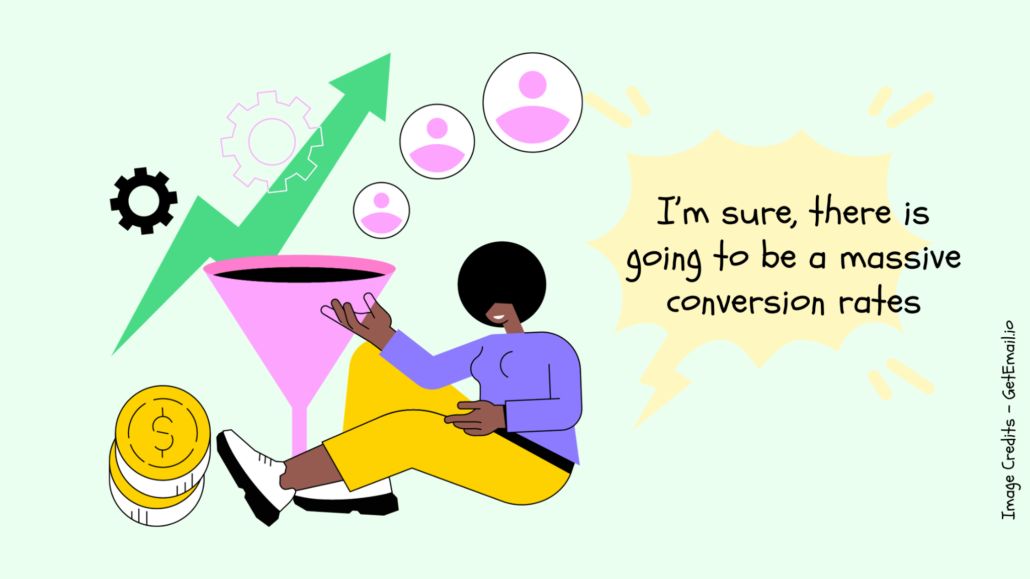
The anticipation of sky-high conversion rates is a lofty aspiration for email marketers.
It’s natural to expect that every email will lead to a flood of conversions, whether it’s product purchases, sign-ups, or other desired actions.
However, the reality of email marketing’s conversion rates is more nuanced.
The excitement of hitting the send button is often accompanied by visions of extraordinary conversion rates.
After all, the logic goes, if your subscribers are interested in your emails, they should readily convert into customers or take the desired actions.
While this is the dream, it’s not always the reality.
The Truth About Conversion Rates
Email marketing can indeed yield impressive conversion rates, but the reality is that not every email campaign will lead to sky-high conversions.
Conversion rates can vary based on factors like the quality of your email list, the relevance of your content, and the effectiveness of your call-to-action.
Improving Conversion Rates
To navigate this expectation versus reality, it’s essential to focus on conversion rate optimization.
This involves continually refining your email content, design and calls to action to encourage more conversions.
A/B testing is a valuable tool for discovering what works best with your specific audience. Over time, you can improve conversion rates and inch closer to your expectations.
Expectation # 9 - No Technical Hurdles
Now let us discuss the expectation of smooth sailing vs. technical turbulence of email marketing.
Expecting email marketing to be technically easy is a common misconception, particularly among those new to the field.
The belief that setting up and managing email campaigns requires minimal technical effort can lead to significant challenges when the reality of email marketing’s complexities sets in.
Handling Technical Hurdles Gracefully
The world of email marketing comes with its set of technical challenges.
These may include issues related to HTML coding, email deliverability, tracking and analytics, and the configuration of your email marketing platform.
While some platforms offer user-friendly interfaces, email marketing is far from “set it and forget it.”
Troubleshooting Common Email Marketing Issues
Email marketers often encounter technical issues, such as emails landing in the spam folder, images not displaying correctly, or links breaking.
These challenges can disrupt your campaigns and impact your results.
To handle these technical hurdles gracefully, it’s essential to have a strong understanding of email marketing best practices, keep an eye on industry trends, and be prepared to troubleshoot issues as they arise.
Continuing education and staying informed about email marketing’s evolving technical landscape will empower you to overcome these challenges.
Expecting a trouble-free journey while being prepared for technical turbulence is the key to effectively navigating the complexities of email marketing.
Concluding Thoughts
So, here we are, after traversing the world of email marketing expectations versus reality.
To summarize, email marketing isn’t about overnight success, but about gradual growth and building strong, lasting relationships with your audience. It’s all about planting seeds, nurturing them, and watching your garden flourish.
And not every email gets a 100% open rate, and that’s perfectly normal. The key is to manage your expectations and focus on continuous improvement. Just like in a garden, you keep tending it, making it better with each passing day.
In email marketing, there are costs involved, but they’re an investment in reaching your audience effectively.
By embracing the nuances of spam filtering and email verification, you can make sure that your messages reach the right audience’s inbox.
We hope you’ve enjoyed this piece of content and find it insightful. If you have any questions or need further guidance, feel free to reach out to us. Your email marketing journey is just beginning, and there’s a world of possibilities waiting for you.
